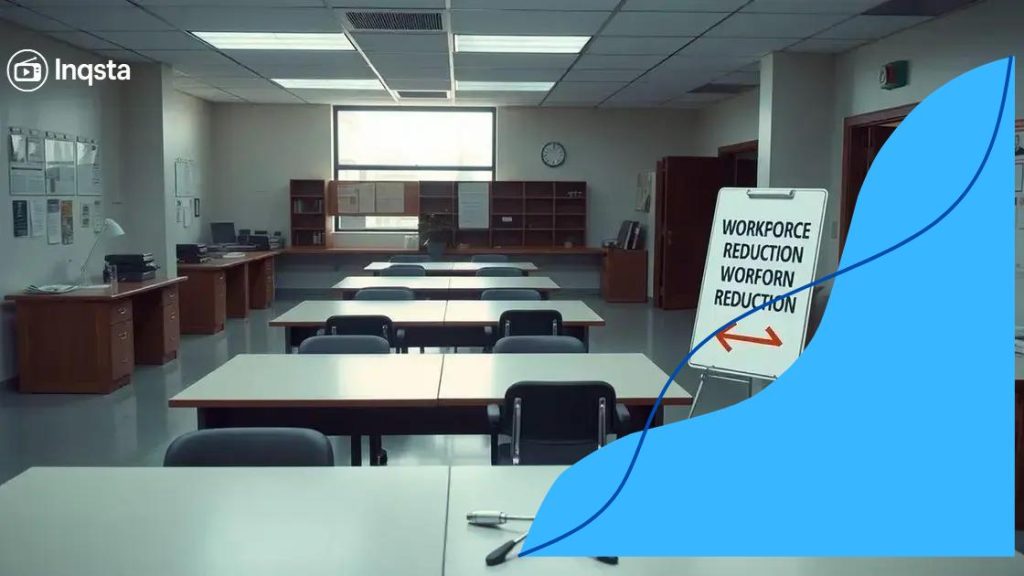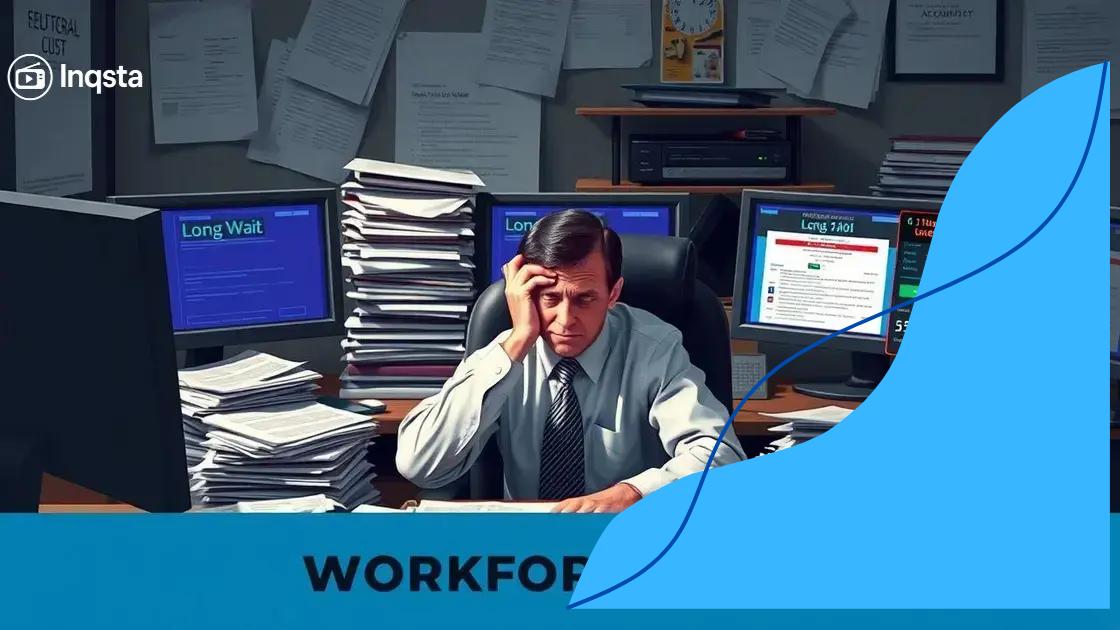Trump administration federal workforce cuts: what you need to know

Anúncios
The Trump administration’s federal workforce cuts aimed to reduce spending and streamline operations, significantly impacting employee morale and the quality of public services.
Trump administration federal workforce cuts have stirred quite a debate across the nation. Many wonder how these changes affect public services and the employees behind them. Let’s delve into the nuances and implications of these cuts.
Anúncios
Overview of federal workforce cuts
Understanding the overview of federal workforce cuts during the Trump administration is essential to grasping the broader impact on government operations. These cuts aimed to streamline government processes but sparked considerable debate.
Key Reasons for the Cuts
The administration sought to achieve several goals through these cuts, including:
- Reducing government spending and budget deficits.
- Increasing efficiency in federal agencies.
- Responding to calls for a smaller government.
While these reasons seem straightforward, the execution has led to various challenges. For instance, staffing shortages have affected the delivery of public services. Citizens often voice their concerns about longer wait times and decreased quality in government services.
Anúncios
Immediate Consequences
These workforce reductions also impacted morale among federal employees. Job security became a significant worry, leading many to seek opportunities elsewhere. As a result, federal agencies faced increased turnover rates, which can be costly and disruptive.
The balance between budgetary constraints and effective public service provision is delicate. Federal workforce cuts might reduce immediate costs, but the long-term implications could harm government efficiency and public trust. Understanding these factors is crucial for evaluating the overall effectiveness of the Trump administration’s approach.
Key objectives of the Trump administration
The key objectives of the Trump administration regarding federal workforce cuts reflect a broader strategy aimed at reshaping the government. These goals included a mix of economic, organizational, and political aims.
Streamlining Government Operations
One main objective was to streamline government operations to improve efficiency. By reducing the number of federal employees, the administration believed it could eliminate redundant positions, thus optimizing processes.
- Identifying and removing inefficiencies within agencies.
- Encouraging faster decision-making and responsiveness.
- Enhancing accountability and performance among remaining staff.
Another significant goal was to reduce federal spending. The Trump administration pushed for a budget that cut costs associated with personnel while simultaneously aiming to decentralize authority, giving more power to individual agencies. This strategy was thought to motivate them to prioritize fiscal responsibility.
Political Context
In a political context, these cuts were also framed as a means to fulfill campaign promises of a smaller government. The administration sought to appeal to its base by demonstrating a commitment to trimming federal agencies and reducing the overall size of government.
This approach generated mixed reactions. Supporters applauded the effort to cut what they viewed as unnecessary government jobs, while critics raised concerns about the potential negative impacts on public services. As cuts continued, they highlighted the fine line between reducing expenditures and maintaining effective government services.
Impact on federal services and employees

The impact on federal services and employees due to the workforce cuts under the Trump administration has been significant and far-reaching. These changes did not just alter the number of personnel; they also affected the quality and availability of services provided to the public.
Service Availability
As federal agencies reduced their workforce, many faced challenges in maintaining essential services. Some of the key areas affected included:
- Delays in processing applications for benefits.
- Longer wait times for public services and support.
- Increased errors due to fewer staff handling high volumes of work.
With fewer employees, existing staff often struggled to meet their responsibilities, leading to service disruptions. This situation raised concerns among the public who rely on federal services for vital support.
Employee Morale
The morale of federal employees also took a hit. Many workers felt uncertain about their job security, resulting in a decline in overall workplace satisfaction. A significant number chose to leave their positions or retire early, further exacerbating staffing shortages. This cycle of turnover has created challenges in maintaining institutional knowledge and experience within agencies.
As employees faced increasing workloads and dwindling resources, their ability to serve the public effectively became compromised. This scenario created a ripple effect, as the public perceived a decline in the responsiveness and efficiency of federal services.
Public response and criticism
The public response and criticism regarding federal workforce cuts during the Trump administration highlighted a mix of support and concern. Many citizens had strong feelings about how these changes affected their interactions with government agencies.
Support from Certain Groups
Some groups supported the cuts, arguing that a leaner federal workforce could lead to more efficient government operations. They believed that reducing the number of employees would eliminate waste and improve focus on essential services.
- Advocates for smaller government applauded cost-saving measures.
- Some taxpayers appreciated the immediate economic benefits of reducing spending.
- Business groups claimed quicker decision-making would enhance economic growth.
However, while some supported the cuts, others were deeply concerned about the implications. Many critics pointed out that these reductions jeopardized public services. They noted how crucial support systems, such as social security and veteran affairs, might falter under fewer employees.
Criticism and Concerns
Many members of the public expressed fear regarding the potential decline in service quality. Long wait times and processing delays became more common, leading to frustration among citizens relying on timely government assistance.
Forums, social media, and local meetings became platforms for discussion and outcry over the cuts. Concerned citizens raised questions about the long-term effects on the efficacy of federal agencies and on the services they provided.
This division in public sentiment exposed the challenges the Trump administration faced in justifying the workforce cuts. It illustrated how balancing budgetary goals with the needs of the populace proved to be a complex issue.
Future outlook for federal employment
The future outlook for federal employment in the wake of the Trump administration’s workforce cuts is uncertain and complex. These cuts have reshaped the landscape of government jobs and left many questioning what the future holds.
Potential Changes in Staffing Levels
As federal agencies continue to navigate their new realities, staffing levels may fluctuate. The impact of previous cuts has created ongoing uncertainty about how many employees agencies will retain. Many experts suggest that a trend towards more flexible hiring practices will emerge.
- Agencies may prioritize hiring based on immediate needs.
- Temporary and contract positions could become more common.
- Job openings may increase as agencies adapt to new demands.
This shift indicates that federal employment may not return to pre-cut levels anytime soon, leading to long-term transformations in how the government operates.
Impact on Diversity and Inclusion
Another critical aspect of the future of federal employment concerns diversity and inclusion. Workforce reductions often disproportionately affect underrepresented groups. Taking steps to ensure that hiring practices prioritize diversity will be essential.
As agencies begin to hire again, they will likely face pressure to create inclusive environments. Innovation in recruitment processes may also arise, focusing on wide outreach and community engagement.
As the federal landscape evolves, agencies must balance their fiscal responsibilities with the need for a diverse and well-equipped workforce. This balance will be crucial in shaping public perception and trust in government institutions moving forward.
FAQ – Frequently Asked Questions about Federal Workforce Cuts
What were the main objectives of the Trump administration’s workforce cuts?
The primary goals were to reduce government spending, streamline operations, and fulfill campaign promises for a smaller government.
How did workforce cuts impact federal services?
Workforce cuts led to delays in processing, longer wait times for services, and decreased quality in public assistance.
What effects did the cuts have on employee morale?
Employee morale decreased significantly, leading to higher turnover rates and concerns about job security among federal workers.
What is the outlook for federal employment in the future?
The future of federal employment may involve flexible hiring practices focused on immediate needs while prioritizing diversity and inclusion.